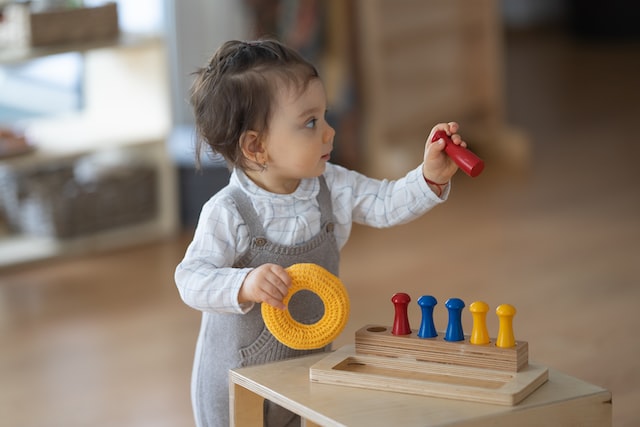This article is part of the series “Organize your home with the Montessori Method“
In this series of articles dedicated to “How to organize home with the Montessori method”, you will find out how to build an environment that can support children at best, including them in daily tasks and supporting their independence. We will not spend much time discussing activities or toys but we will rather think about reorganizing the environment to make it child-friendly while satisfying the needs of the whole family. As you will notice, these articles will not focus on specific rooms but on needs and routines such as eating, playing, sleeping and so on. In this way, my tips hope to be suitable for any home environment, whether you live in a 4-bedroom house or a studio flat.
mealtimes: how to organize home
The first necessity we will discuss is eating, not only because we spend quite some time cooking or at the table but also because mealtimes can be a tricky time of the day. From my experience of working with parents, mealtimes can often turn into a battlefields of chaos, shouting and threats. While I cannot guarantee you that your children will eat everything you expect them to, I can however assure you that mealtimes can be a pleasurable and enjoyable moment of the day. All it it takes is, first, finding the right way to arrange your home with the space that you have available. Second, giving children a little bit of autonomy when it comes to choices and food preparation.
montessori nurseries: cooperation and comunity
If you visited a Montessori nursery, you would notice a corner of the classroom dedicated to snack. Unlike traditional nurseries where children gather at the same time and sit for a snack, here the table is accessible for most of the day on a self-service basis. The reason why snack is available for most of the day is that everybody is differently. Some people are very hungry in the morning while others can carry on without a snack between breakfast and lunch. So, by allowing children to serve themselves, under the careful guidance of an adult, they then learn to listen to their body. Moreover, When lunchtime approaches, the teachers close the area and children begin to contribute to preparing the classroom for lunch. The learning process requires patience, role modelling and a lot of trust in the child’s abilities.

cooking together
You might be wondering, how is this possible and what are the benefits for children? First of all, children are motivated by the desire of contributing and mealtimes are the perfect chance to give them this possibility. Additionally, food prep is not only a way of developing physical and practical skills, but it helps children feel part of the family. The possibility of learning and participation are truly infinte. For example, you can invite them to prepare the snack or help you with the meals for the family. They can cut veggies, mix ingredients, add them, pour their own water or milk and serve themselves food. Finally, let’s see how to make this happen without too much stress and how to best arrange your home.
From food prep to cleaning
Considering the spaces in your kitchen, choose a shelf within easy reach of the children where you can arrange objects such as plates, cutlery, placemats and glasses. Keep on sight only what is necessary, choose real objects, of a size and weight suitable for children. Similarly, cleaning tools should also be real and child-friendly, organized in a corner in an orderly manner. When given tools that are suitable for them, there’s no activity kids see us doing that they wouldn’t want to try themselves. Keep in mind, the aim is not to force them to clean or cook, but to organize your house so as to involve them in what are everyone’s responsibilities. You could start with a simple: “Will you help me?” and see where it takes you. If the child doesn’t want to participate, invite him to watch you do it.
snack time
One of the fundamental steps to support the autonomy of children in this area is to make both food and the necessary for preparation accessible. Depending on what you decide to include in the snack, the food could be prepared in a closed container and placed in an easily accessible kitchen cabinet or on the bottom shelf of the refrigerator, accompanied by all the necessary tools. The choice of food depends on the eating habits of the children however, to industrially prepared snacks, I suggest you choosing something that requires the children’s contribution. For example, fruit to cut, a slice of bread and cheese to spread or yoghurt to pour from the container to a cup with fruit or cereal. After showing where everything can be found, demonstrate how to move one item at a time and walk slowly when holding delicate items.
organize your home for the main meals
Contribution to preparing meals can be, for logistical and safety reasons, a little more complicated than a snack, but certainly not impossible. While involving children every day in cooking meals from start to finish with us may not be feasible, it is undoubtedly possible to involve them in part of the preparation, whether it is the cutting of vegetables or the setting of the table. Participation can take place in different ways, depending on the size and characteristics of the kitchen, but also on the abilities and awareness of the children. Another possibility is to prepare a serving dish at the table from which the children can help themselves or opt for dishes that require assembly such as a flatbread or a sandwich.


